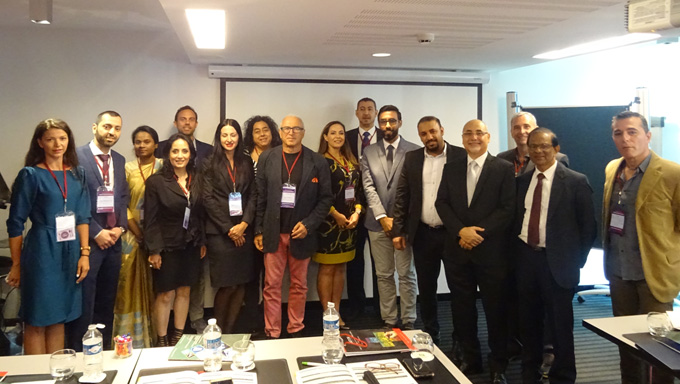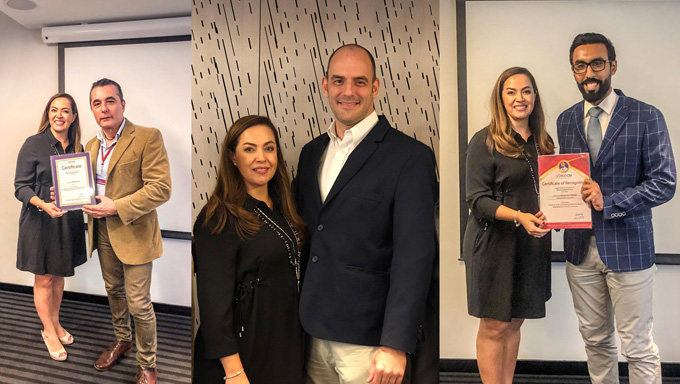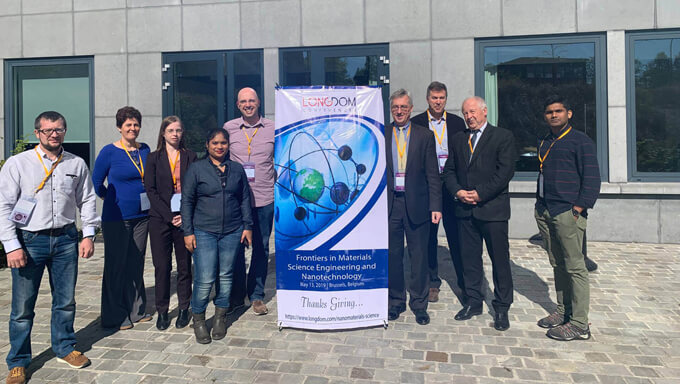A PHP Error was encountered
Severity: Notice
Message: Undefined index: start_date
Filename: blocks/page-banner.php
Line Number: 31
Backtrace:
File: /var/www/html/application/modules/webinars/views/blocks/page-banner.php
Line: 31
Function: _error_handler
File: /var/www/html/application/third_party/MX/Loader.php
Line: 364
Function: include
File: /var/www/html/application/third_party/MX/Loader.php
Line: 306
Function: _ci_load
File: /var/www/html/application/core/MY_Loader.php
Line: 121
Function: view
File: /var/www/html/application/modules/webinars/controllers/Home.php
Line: 40
Function: webinar_template
File: /var/www/html/index.php
Line: 317
Function: require_once
A PHP Error was encountered
Severity: Notice
Message: Undefined index: end_date
Filename: blocks/page-banner.php
Line Number: 32
Backtrace:
File: /var/www/html/application/modules/webinars/views/blocks/page-banner.php
Line: 32
Function: _error_handler
File: /var/www/html/application/third_party/MX/Loader.php
Line: 364
Function: include
File: /var/www/html/application/third_party/MX/Loader.php
Line: 306
Function: _ci_load
File: /var/www/html/application/core/MY_Loader.php
Line: 121
Function: view
File: /var/www/html/application/modules/webinars/controllers/Home.php
Line: 40
Function: webinar_template
File: /var/www/html/index.php
Line: 317
Function: require_once
A PHP Error was encountered
Severity: Notice
Message: Undefined index: start_date
Filename: blocks/page-banner.php
Line Number: 39
Backtrace:
File: /var/www/html/application/modules/webinars/views/blocks/page-banner.php
Line: 39
Function: _error_handler
File: /var/www/html/application/third_party/MX/Loader.php
Line: 364
Function: include
File: /var/www/html/application/third_party/MX/Loader.php
Line: 306
Function: _ci_load
File: /var/www/html/application/core/MY_Loader.php
Line: 121
Function: view
File: /var/www/html/application/modules/webinars/controllers/Home.php
Line: 40
Function: webinar_template
File: /var/www/html/index.php
Line: 317
Function: require_once
A PHP Error was encountered
Severity: Notice
Message: Undefined index: city_name
Filename: blocks/page-banner.php
Line Number: 42
Backtrace:
File: /var/www/html/application/modules/webinars/views/blocks/page-banner.php
Line: 42
Function: _error_handler
File: /var/www/html/application/third_party/MX/Loader.php
Line: 364
Function: include
File: /var/www/html/application/third_party/MX/Loader.php
Line: 306
Function: _ci_load
File: /var/www/html/application/core/MY_Loader.php
Line: 121
Function: view
File: /var/www/html/application/modules/webinars/controllers/Home.php
Line: 40
Function: webinar_template
File: /var/www/html/index.php
Line: 317
Function: require_once
A PHP Error was encountered
Severity: Notice
Message: Undefined index: country_name
Filename: blocks/page-banner.php
Line Number: 42
Backtrace:
File: /var/www/html/application/modules/webinars/views/blocks/page-banner.php
Line: 42
Function: _error_handler
File: /var/www/html/application/third_party/MX/Loader.php
Line: 364
Function: include
File: /var/www/html/application/third_party/MX/Loader.php
Line: 306
Function: _ci_load
File: /var/www/html/application/core/MY_Loader.php
Line: 121
Function: view
File: /var/www/html/application/modules/webinars/controllers/Home.php
Line: 40
Function: webinar_template
File: /var/www/html/index.php
Line: 317
Function: require_once
A PHP Error was encountered
Severity: Notice
Message: Undefined index: pre_title
Filename: blocks/page-banner.php
Line Number: 44
Backtrace:
File: /var/www/html/application/modules/webinars/views/blocks/page-banner.php
Line: 44
Function: _error_handler
File: /var/www/html/application/third_party/MX/Loader.php
Line: 364
Function: include
File: /var/www/html/application/third_party/MX/Loader.php
Line: 306
Function: _ci_load
File: /var/www/html/application/core/MY_Loader.php
Line: 121
Function: view
File: /var/www/html/application/modules/webinars/controllers/Home.php
Line: 40
Function: webinar_template
File: /var/www/html/index.php
Line: 317
Function: require_once
A PHP Error was encountered
Severity: Notice
Message: Undefined index: main_title
Filename: blocks/page-banner.php
Line Number: 45
Backtrace:
File: /var/www/html/application/modules/webinars/views/blocks/page-banner.php
Line: 45
Function: _error_handler
File: /var/www/html/application/third_party/MX/Loader.php
Line: 364
Function: include
File: /var/www/html/application/third_party/MX/Loader.php
Line: 306
Function: _ci_load
File: /var/www/html/application/core/MY_Loader.php
Line: 121
Function: view
File: /var/www/html/application/modules/webinars/controllers/Home.php
Line: 40
Function: webinar_template
File: /var/www/html/index.php
Line: 317
Function: require_once
A PHP Error was encountered
Severity: Notice
Message: Undefined index: main_title
Filename: blocks/page-banner.php
Line Number: 45
Backtrace:
File: /var/www/html/application/modules/webinars/views/blocks/page-banner.php
Line: 45
Function: _error_handler
File: /var/www/html/application/third_party/MX/Loader.php
Line: 364
Function: include
File: /var/www/html/application/third_party/MX/Loader.php
Line: 306
Function: _ci_load
File: /var/www/html/application/core/MY_Loader.php
Line: 121
Function: view
File: /var/www/html/application/modules/webinars/controllers/Home.php
Line: 40
Function: webinar_template
File: /var/www/html/index.php
Line: 317
Function: require_once
- Home -

A PHP Error was encountered
Severity: Notice
Message: Undefined index: start_date
Filename: blocks/slider.php
Line Number: 164
Backtrace:
File: /var/www/html/application/modules/webinars/views/blocks/slider.php
Line: 164
Function: _error_handler
File: /var/www/html/application/third_party/MX/Loader.php
Line: 364
Function: include
File: /var/www/html/application/third_party/MX/Loader.php
Line: 306
Function: _ci_load
File: /var/www/html/application/modules/webinars/views/index/index.php
Line: 1
Function: view
File: /var/www/html/application/third_party/MX/Loader.php
Line: 364
Function: include
File: /var/www/html/application/third_party/MX/Loader.php
Line: 306
Function: _ci_load
File: /var/www/html/application/core/MY_Loader.php
Line: 122
Function: view
File: /var/www/html/application/modules/webinars/controllers/Home.php
Line: 40
Function: webinar_template
File: /var/www/html/index.php
Line: 317
Function: require_once
A PHP Error was encountered
Severity: Notice
Message: Undefined index: end_date
Filename: blocks/slider.php
Line Number: 165
Backtrace:
File: /var/www/html/application/modules/webinars/views/blocks/slider.php
Line: 165
Function: _error_handler
File: /var/www/html/application/third_party/MX/Loader.php
Line: 364
Function: include
File: /var/www/html/application/third_party/MX/Loader.php
Line: 306
Function: _ci_load
File: /var/www/html/application/modules/webinars/views/index/index.php
Line: 1
Function: view
File: /var/www/html/application/third_party/MX/Loader.php
Line: 364
Function: include
File: /var/www/html/application/third_party/MX/Loader.php
Line: 306
Function: _ci_load
File: /var/www/html/application/core/MY_Loader.php
Line: 122
Function: view
File: /var/www/html/application/modules/webinars/controllers/Home.php
Line: 40
Function: webinar_template
File: /var/www/html/index.php
Line: 317
Function: require_once
A PHP Error was encountered
Severity: Notice
Message: Undefined index: start_date
Filename: blocks/slider.php
Line Number: 172
Backtrace:
File: /var/www/html/application/modules/webinars/views/blocks/slider.php
Line: 172
Function: _error_handler
File: /var/www/html/application/third_party/MX/Loader.php
Line: 364
Function: include
File: /var/www/html/application/third_party/MX/Loader.php
Line: 306
Function: _ci_load
File: /var/www/html/application/modules/webinars/views/index/index.php
Line: 1
Function: view
File: /var/www/html/application/third_party/MX/Loader.php
Line: 364
Function: include
File: /var/www/html/application/third_party/MX/Loader.php
Line: 306
Function: _ci_load
File: /var/www/html/application/core/MY_Loader.php
Line: 122
Function: view
File: /var/www/html/application/modules/webinars/controllers/Home.php
Line: 40
Function: webinar_template
File: /var/www/html/index.php
Line: 317
Function: require_once
A PHP Error was encountered
Severity: Notice
Message: Undefined index: pre_title
Filename: blocks/slider.php
Line Number: 261
Backtrace:
File: /var/www/html/application/modules/webinars/views/blocks/slider.php
Line: 261
Function: _error_handler
File: /var/www/html/application/third_party/MX/Loader.php
Line: 364
Function: include
File: /var/www/html/application/third_party/MX/Loader.php
Line: 306
Function: _ci_load
File: /var/www/html/application/modules/webinars/views/index/index.php
Line: 1
Function: view
File: /var/www/html/application/third_party/MX/Loader.php
Line: 364
Function: include
File: /var/www/html/application/third_party/MX/Loader.php
Line: 306
Function: _ci_load
File: /var/www/html/application/core/MY_Loader.php
Line: 122
Function: view
File: /var/www/html/application/modules/webinars/controllers/Home.php
Line: 40
Function: webinar_template
File: /var/www/html/index.php
Line: 317
Function: require_once
A PHP Error was encountered
Severity: Notice
Message: Undefined index: main_title
Filename: blocks/slider.php
Line Number: 262
Backtrace:
File: /var/www/html/application/modules/webinars/views/blocks/slider.php
Line: 262
Function: _error_handler
File: /var/www/html/application/third_party/MX/Loader.php
Line: 364
Function: include
File: /var/www/html/application/third_party/MX/Loader.php
Line: 306
Function: _ci_load
File: /var/www/html/application/modules/webinars/views/index/index.php
Line: 1
Function: view
File: /var/www/html/application/third_party/MX/Loader.php
Line: 364
Function: include
File: /var/www/html/application/third_party/MX/Loader.php
Line: 306
Function: _ci_load
File: /var/www/html/application/core/MY_Loader.php
Line: 122
Function: view
File: /var/www/html/application/modules/webinars/controllers/Home.php
Line: 40
Function: webinar_template
File: /var/www/html/index.php
Line: 317
Function: require_once
“
A PHP Error was encountered
Severity: Notice
Message: Undefined index: main_title
Filename: blocks/slider.php
Line Number: 262
Backtrace:
File: /var/www/html/application/modules/webinars/views/blocks/slider.php
Line: 262
Function: _error_handler
File: /var/www/html/application/third_party/MX/Loader.php
Line: 364
Function: include
File: /var/www/html/application/third_party/MX/Loader.php
Line: 306
Function: _ci_load
File: /var/www/html/application/modules/webinars/views/index/index.php
Line: 1
Function: view
File: /var/www/html/application/third_party/MX/Loader.php
Line: 364
Function: include
File: /var/www/html/application/third_party/MX/Loader.php
Line: 306
Function: _ci_load
File: /var/www/html/application/core/MY_Loader.php
Line: 122
Function: view
File: /var/www/html/application/modules/webinars/controllers/Home.php
Line: 40
Function: webinar_template
File: /var/www/html/index.php
Line: 317
Function: require_once
A PHP Error was encountered
Severity: Notice
Message: Undefined index: theme
Filename: blocks/slider.php
Line Number: 263
Backtrace:
File: /var/www/html/application/modules/webinars/views/blocks/slider.php
Line: 263
Function: _error_handler
File: /var/www/html/application/third_party/MX/Loader.php
Line: 364
Function: include
File: /var/www/html/application/third_party/MX/Loader.php
Line: 306
Function: _ci_load
File: /var/www/html/application/modules/webinars/views/index/index.php
Line: 1
Function: view
File: /var/www/html/application/third_party/MX/Loader.php
Line: 364
Function: include
File: /var/www/html/application/third_party/MX/Loader.php
Line: 306
Function: _ci_load
File: /var/www/html/application/core/MY_Loader.php
Line: 122
Function: view
File: /var/www/html/application/modules/webinars/controllers/Home.php
Line: 40
Function: webinar_template
File: /var/www/html/index.php
Line: 317
Function: require_once
Briefly Know About This Event
Longdom Conferences extends our immense pleasure and honor to invite you to attend the “Webinar on Industrial Chemistry”, scheduled on October 25, 2020. It is focusing on the theme “Emphasizing the global approach on Industrial Chemistry " to enhance and explore knowledge among academics and industry personnel dealing with Industrial Chemistry and its related subjects to establish corporations and exchanging ideas and it aims to provide the right stage to present stimulating Keynote talks, plenary sessions, discussion panels, b2b Meetings, poster symposia, young researchers forum, Video Presentations, and Workshops.








